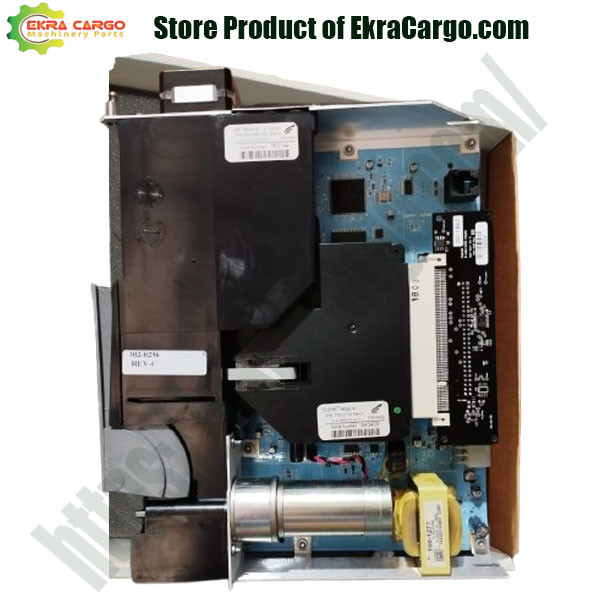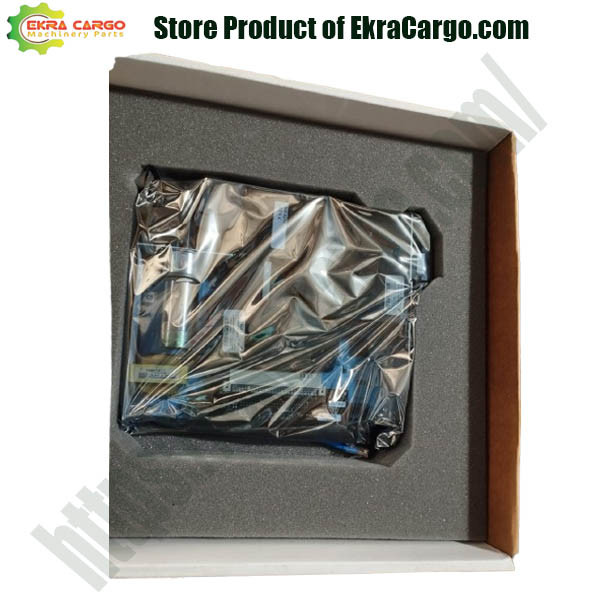
Genexpert 6 Colour Review: Is It The Right Multiplex PCR System For Your Lab? | Best Rates | Buying Guide | Detailed Tips | Maintenance | FAQ |
Genexpert 6 Colour Review: Is It The Right Multiplex PCR System For Your Lab?
In the fast-paced world of molecular diagnostics, efficiency, accuracy, and speed are not just desirable—they are absolutely critical. Whether you're running a clinical research lab, a hospital diagnostic unit, or a public health facility, the equipment you choose can dramatically impact your throughput, turnaround times, and ultimately, patient outcomes.

Check the product at Ekra Cargo
The Cepheid GeneXpert system has long been a gold standard in automated molecular testing. But with the release of the more advanced Genexpert 6 Colour system, many labs are faced with a crucial decision: is this the right instrument to future-proof their operations?
This in-depth review will dissect the Genexpert 6 Colour, exploring its revolutionary technology, unparalleled benefits, and a few considerations you must know. We’ll also compare it to other leading systems and provide a clear buying guide to ensure you make the most informed investment for your laboratory's needs.
What is the Genexpert 6 Colour System?
The Genexpert 6
Colour is a state-of-the-art, fully integrated, and automated platform for
performing real-time PCR (Polymerase Chain Reaction) assays. It’s the evolution
of the highly successful GeneXpert systems, designed to address the growing
need for highly multiplexed testing.
Its core innovation
lies in its name: the 6-colour optical detection system. Unlike traditional real-time PCR
machines that detect 1, 2, or maybe 4 fluorescent channels, this system can
simultaneously detect six different fluorophores in a single reaction tube.
This allows for incredibly complex multiplex assays, enabling labs to test for
a panel of pathogens, genetic markers, or resistance genes from one patient
sample in one go.
Key Technical Specifications
·
Technology: Real-time PCR with integrated sample preparation.
·
Optical System: 6-colour fluorescent detector.
·
Modules: Available in 1-, 2-, 4-, 16-, 48-, and 80-module
configurations (e.g., GeneXpert XVI, XLVIII, LXXX) to scale with any lab's
workload.
·
Automation: Fully integrates sample lysis, nucleic acid extraction,
purification, amplification, and detection.
·
Throughput: Varies by module count; the 80-module system can run
hundreds of tests per day.
·
Assay Menu: Supports Cepheid's extensive and growing menu of
FDA-cleared and CE-IVD tests for infectious diseases (COVID-19, Flu, RSV, TB,
HIV, HCV, HPV, STIs), healthcare-associated infections (HAIs), and genetic
conditions.
·
Software: Intuitive touchscreen interface with built-in data
analysis and connectivity (LIS/HIS).
In-Depth Review: Pros and Cons of the Genexpert 6 Colour
After extensive
research and user feedback, here’s a balanced look at what makes this system
powerful and where it might not be the perfect fit.
Advantages (Pros)
1. Unmatched Multiplexing Capability: This is its killer feature. The
ability to run 6-plex assays in a single cartridge is a game-changer for
syndromic testing. For example, you can distinguish between COVID-19, Influenza
A, Influenza B, and RSV from one nasal swab with a single test, saving precious
time and sample volume.
2. Exceptional Ease of Use and "Walk-Away"
Automation: The
system is famously user-friendly. Lab technicians simply load the patient
sample into the single-use cartridge, load the cartridge into the module, and
press start. The system handles every subsequent step automatically, minimizing
hands-on time and drastically reducing the risk of cross-contamination or human
error.
3. Rapid Turnaround Time (TAT): Speed is a hallmark of the
GeneXpert family. Most assays provide results in under an hour. This enables
same-day diagnosis and treatment, which is vital for effective patient
management in acute care settings.
4. Extensive and Trusted Test Menu: Cepheid offers one of the broadest
and most clinically validated menus of automated PCR tests on the market. This
means your investment in the hardware is protected by a reliable pipeline of
diagnostic assays for various clinical needs.
5. Scalability and Flexibility: From the compact 1-module
GeneXpert Infinity-48s to the massive 80-module Infinity-80s, the platform can
scale to meet the demands of a small clinic or a high-volume national reference
lab. Modules can run different tests simultaneously.
6. Closed-System Design: The self-contained, disposable
cartridges make the system incredibly safe. The sample is never exposed to the
lab environment, protecting both the operator and the integrity of other
samples.
Disadvantages (Cons)
1. High Cost of Ownership: This is the most significant
barrier. The initial capital investment for the instrument is substantial.
Furthermore, the proprietary single-use cartridges represent a significant
recurring cost. Labs must carefully calculate the cost-per-test to ensure
financial viability.
2. Proprietary "Razor-and-Blade" Model: You are locked into Cepheid's
ecosystem. You can only use Cepheid-branded cartridges and assays on the
instrument. This limits flexibility and prevents shopping around for cheaper
reagents or developing your own in-house tests.
3. Limited Customization: The system is designed for
clinical diagnostics, not for research. If your lab's primary work involves
assay development, primer optimization, or basic research requiring flexible
reaction conditions, the closed nature of the GeneXpert is a major limitation.
It is a diagnostic tool, not a research tool.
4. Physical Footprint: While the smaller systems are benchtop, the high-throughput models (48-, 80-module) are large instruments that require significant laboratory floor space and appropriate electrical and ventilation infrastructure.
Buying Guide: Is the Genexpert 6 Colour Right for You?
Choosing a PCR
system is a major decision. Ask yourself these critical questions:
1. What
is Your Primary Application?
·
Clinical Diagnostics & Patient Care: If your main goal is to run fast,
accurate, FDA-approved diagnostic tests for patient management, the GeneXpert
is a top contender.
·
Research & Development: If you need to design custom
primers, probes, and reaction protocols, an open-system real-time PCR machine
from Bio-Rad or Thermo Fisher is a better fit.
2. What
is Your Testing Volume?
·
Low to Medium Volume (e.g., a clinic or small hospital): A 1 or 2-module system might be
sufficient.
·
High Volume (e.g., large hospital hub or reference lab): A 16, 48, or 80-module system is
necessary to maintain a fast TAT with high demand.
3. What
is Your Budget (Capital + Recurring)?
Be brutally honest. Can you afford the upfront cost? More importantly, can you
sustain the ongoing cost of the cartridges based on your projected test volume?
Create a detailed 5-year financial model.
4. What
Level of Staff Expertise Do You Have?
The GeneXpert's simplicity reduces the need for highly trained molecular
biologists. This can be a huge advantage in settings with high staff turnover
or limited specialized training.
5. Do You
Need Multiplexing?
If you primarily run single-plex tests (e.g., just COVID-19), a system with
fewer detection channels might be more cost-effective. The value of the
6-colour system is fully realized when you run complex multiplex panels.
Top Alternative Systems to Consider
It's always wise
to shop around. Here are two other leading platforms in the molecular
diagnostics space.
1. BioFire FilmArray (by bioMérieux)
·
Pros: Incredibly
simple, even more so than GeneXpert. Offers massive syndromic panels (e.g.,
BioFire Respiratory 2.1 Panel tests for 22 targets). Excellent for comprehensive
testing.
·
Cons: Even
higher cost-per-test than GeneXpert. Less flexible—you run a whole panel even
if you only suspect one pathogen. Slower throughput than high-end GeneXpert
systems.
·
Best For: Labs that need comprehensive syndromic results with the
absolute minimum hands-on time, and where cost-per-test is a secondary concern.
2. Open-System qPCR Machines (e.g., Bio-Rad CFX Opus, Thermo
Fisher QuantStudio)
·
Pros: Total
flexibility. You can use any company's reagents, develop your own assays, and
have full control over reaction parameters. Significantly lower cost-per-test
for high-volume, in-house developed tests.
·
Cons: Require
extensive hands-on time, skilled technicians, and a separate area for sample
prep to avoid contamination. Not a "walk-away" solution.
· Best For: Research laboratories, core facilities, and large labs that develop and validate their own tests and prioritize flexibility and low reagent costs over full automation.

Check product at Ekra Cargo
Conclusion: A Powerhouse for Clinical Diagnostics
The Genexpert 6 Colour system is not just an instrument;
it's a comprehensive diagnostic solution. Its revolutionary 6-colour
multiplexing, combined with its proven automation, speed, and extensive test
menu, makes it arguably the most powerful and efficient platform for clinical
diagnostic labs on the market.
Its ideal
user is a medium-to-high volume clinical lab that prioritizes speed, accuracy,
operational simplicity, and the ability to run sophisticated multiplex tests to
guide patient treatment quickly.
However, its closed
architecture and high recurring costs mean it's not the right tool for every
lab. Research-focused institutions and those with extreme budget constraints
would be better served by an open qPCR system.
Ready to
See if the Genexpert 6 Colour Fits Your Lab's Workflow?
Understanding
the specs is one thing; seeing how it integrates into your specific lab
environment is another. We are an authorized supplier of Cepheid GeneXpert systems.
